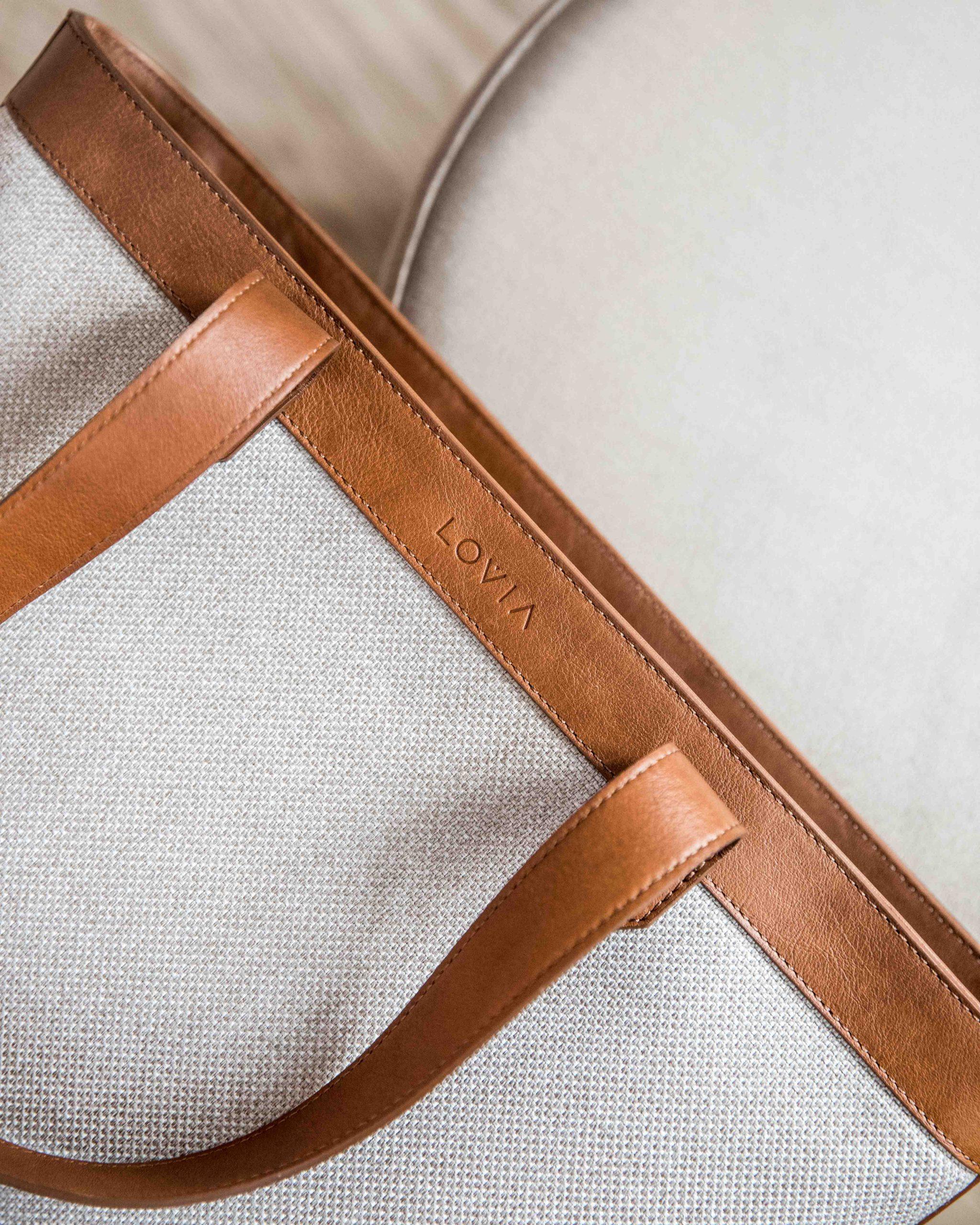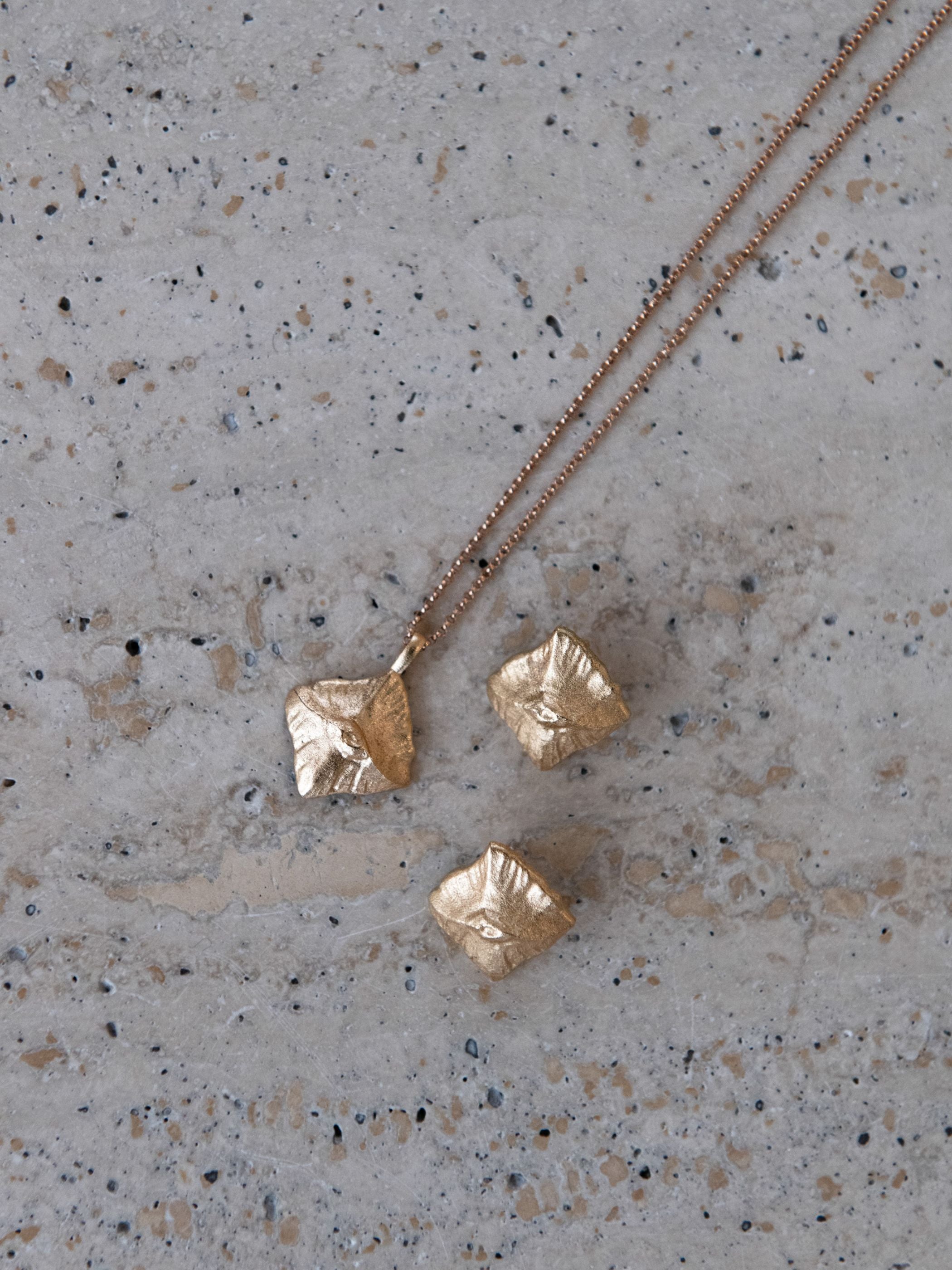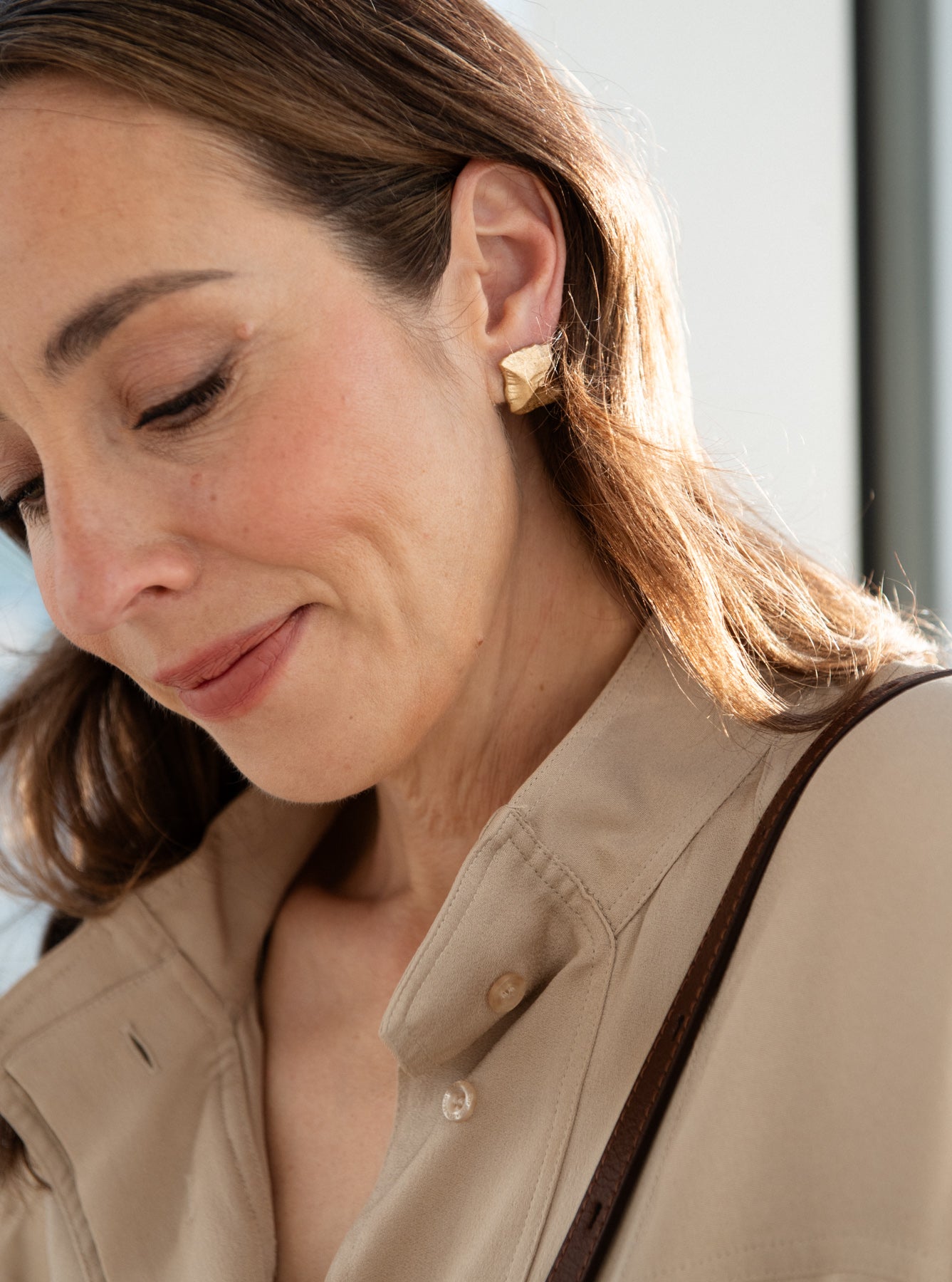
Furniture factory surplus leather, Hakola
From Hakola leather sofas to bags
Hakola
Furniture surplus leather

Sustainable design for reuse
At the heart of the circular economy is the idea of using existing materials efficiently. This idea is also reflected in our cooperation with Hakola. The story of the furniture company Hakola began in Jurva in 1963, when Eero Hakola decided to start making furniture, like many others in Jurva at the time. Over the years, globalization and consumer habits left their mark on local furniture production, and by the turn of the millennium, only a handful of furniture factories remained. However, the Hakola story is still going strong in the third generation, and we are very happy about that, because now the new owners of Lovia bags can also enjoy the timeless design produced at the Jurva factory. The leftover fabric pieces from the upholstery of Hakola sofas are given a new life in the form of Lovia bags.
FOUNDED: 1963
EMPLOYEES: 35
LOCATION: JURVA, FINLAND
From sofa leather to durable bags
Hakola's responsibility thinking starts from the timeless and user-oriented design of the product. We want to make furniture that will last for time and wear, so we pay a lot of attention to the choice of materials. Hakola's bags made from surplus leather are very durable and thus reduce the environmental impact when one bag is used for a long time. This means that small pieces of leather are left over from the upholstery of Hakola's leather sofas, which can no longer be used in the upholstery of other furniture. The surplus pieces are collected and delivered to Lovia, after which they are made into long-lasting bags for their new owners on our designer, Outi's desk.
Now you know how the leather ends up from Hakola to Lovia in Helsinki. But what about the origin of the leather? Hakola sources its Fine Leather and nubuck leather from Denmark, and the vegetable tanned leather comes from Finland, from Ahlskog to Kruunupyy.
Greetings from the Jurva factory
This is a compilation of greetings from Hakola and bits and pieces of the team's everyday life, just as it appears at the factory in Jurva.
"We do our best to ensure that furniture production and carpentry expertise remain in Finland. Our local manufacturing method and domestic partners guarantee that the production and transportation of the product to the customer creates a lower environmental load. The manufacturing materials come to us as close as possible, mostly from Finland. The most important thing for us in material procurement is quality, because a truly sustainable product is the most responsible product of all. We have also made concrete changes at our factory in Jurva. Energy consumption has been reduced despite the significant increase in production volumes. Currently, the factory is heated with both wood pellets and an air-source heat pump. The factory has switched to using LED lighting and new, more energy-efficient machinery has also been purchased. Solar panels were installed at the factory in spring 2020, which practically cover all of our electricity needs.
I have been following Lovia's amazing story closely since the beginning and it has been wonderful to be able to collaborate with a brand that is truly responsible. We want to reduce the creation of surplus material to a minimum. It is amazing to see how our surplus materials get a new life in the hands of Lovia!"
- Annaleena Hakola, Creative CEO of Hakola
We do a lot of good, but we are not perfect.
We are already doing great things with Hakola, but reducing our environmental impact requires continuous self-development. So there is still room for improvement.
Some of the materials used by Hakola, such as foam, leather and some fabrics, will have challenges in the future when viewed from an environmental perspective. We want to inspire and spark discussion about how material choices can be developed in a more responsible direction and how to find low-emission and preferably recycled or easily recyclable materials to replace current materials. This way, the sofas of the future and the bags made from their surplus will have a lower environmental impact. If Hakola sofas are made from recycled material in the future, the material that ends up in Lovia bags would then be surplus material that has already been recycled once. Sounds pretty good, doesn't it?

Hakola
Furniture surplus textile

Sustainable design for reuse
At the heart of the circular economy is the idea of using existing materials efficiently. This idea is also reflected in our cooperation with Hakola. The story of the furniture company Hakola began in Jurva in 1963, when Eero Hakola decided to start making furniture, like many others in Jurva at the time. Over the years, globalization and consumer habits left their mark on local furniture production, and by the turn of the millennium, only a handful of furniture factories remained. However, the Hakola story is still going strong in the third generation, and we are very happy about that, because now the new owners of Lovia bags can also enjoy the timeless design produced at the Jurva factory. The leftover fabric pieces from the upholstery of Hakola sofas are given a new life in the form of Lovia bags.
FOUNDED: 1964
EMPLOYEES: 500
LOCATION: KURIKKA, FINLAND
From sofa leather to durable bags
Hakola's responsibility thinking starts from the timeless and user-oriented design of the product. We want to make furniture that will last for time and wear, so we pay a lot of attention to the choice of materials. Hakola's bags made from surplus leather are very durable and thus reduce the environmental impact when one bag is used for a long time. This means that small pieces of leather are left over from the upholstery of Hakola's leather sofas, which can no longer be used in the upholstery of other furniture. The surplus pieces are collected and delivered to Lovia, after which they are made into long-lasting bags for their new owners on our designer, Outi's desk.
Now you know how the leather ends up from Hakola to Lovia in Helsinki. But what about the origin of the leather? Hakola sources its Fine Leather and nubuck leather from Denmark, and the vegetable tanned leather comes from Finland, from Ahlskog to Kruunupyy.
Greetings from the Jurva factory
We want to give our partners a chance to have their voices heard, because without them the idea of utilizing waste material would just remain, well, an idea. Here are some greetings from Hakola and snippets from the team's everyday life, just as it appears at the factory in Jurva.
"We do our best to ensure that furniture production and carpentry expertise remain in Finland. Our local manufacturing method and domestic partners guarantee that the production and transportation of the product to the customer creates a lower environmental load. The manufacturing materials come to us as close as possible, mostly from Finland. The most important thing for us in material procurement is quality, because a truly sustainable product is the most responsible product of all. We have also made concrete changes at our factory in Jurva. Energy consumption has been reduced despite the significant increase in production volumes. Currently, the factory is heated with both wood pellets and an air-source heat pump. The factory has switched to using LED lighting and new, more energy-efficient machinery has also been purchased. Solar panels were installed at the factory in spring 2020, which practically cover all of our electricity needs.
I have been following Lovia's amazing story closely since the beginning and it has been wonderful to be able to collaborate with a brand that is truly responsible. We want to reduce the creation of surplus material to a minimum. It is amazing to see how our surplus materials get a new life in the hands of Lovia!"
- Annaleena Hakola, Creative CEO of Hakola
We do a lot of good, but we are not perfect.
We are already doing great things with Hakola, but reducing our environmental impact requires continuous self-development. So there is still room for improvement.
Some of the materials used by Hakola, such as foam, leather and some fabrics, will have challenges in the future when viewed from an environmental perspective. We want to inspire and spark discussion about how material choices can be developed in a more responsible direction and how to find low-emission and preferably recycled or easily recyclable materials to replace current materials. This way, the sofas of the future and the bags made from their surplus will have a lower environmental impact. If Hakola sofas are made from recycled material in the future, the material that ends up in Lovia bags would then be surplus material that has already been recycled once. Sounds pretty good, doesn't it?
find treasures made from leftover materials

weekend bags

shoulder bags








